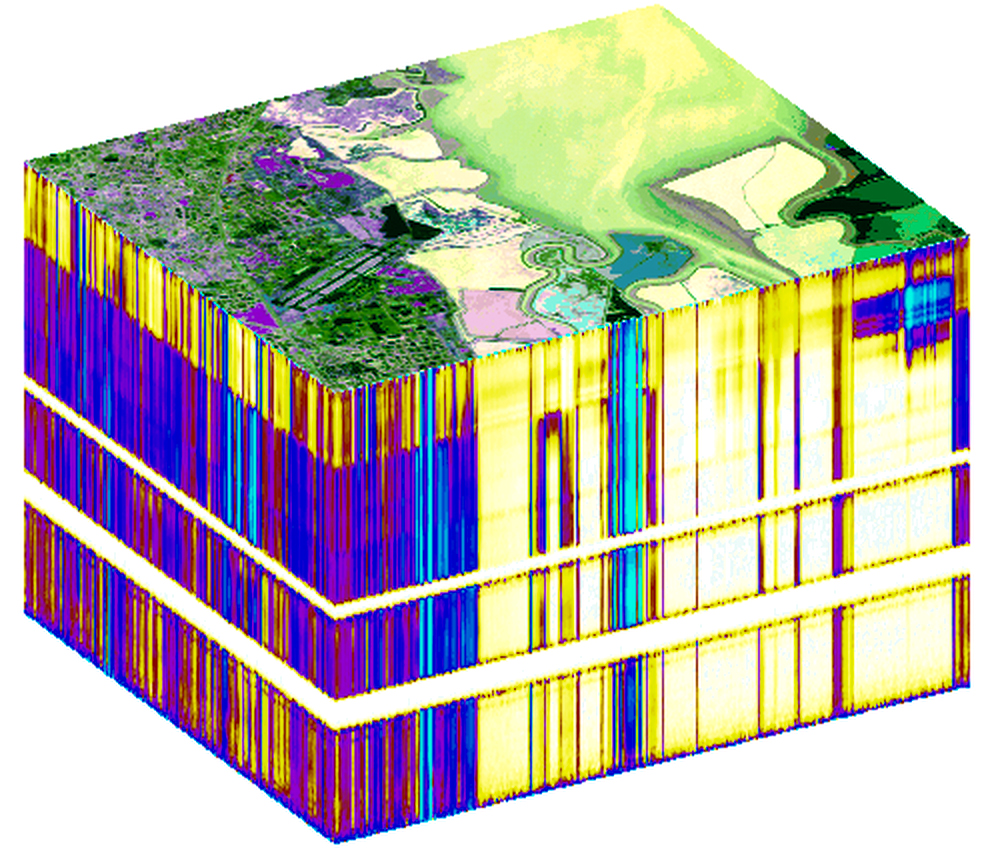An imaging technique that shows the underlying spectrum for each pixel
 Hyperspectral imaging combines digital imaging with spectroscopy, so that the underlying frequencies in the spectrum for each pixel can be identified. Because only a single wavelength can be represented as a colour for a pixel, a two-dimensional hyperspectral image effectively represents three-dimensional information, in which the third dimension represents the multiple underlying frequencies.
Hyperspectral imaging combines digital imaging with spectroscopy, so that the underlying frequencies in the spectrum for each pixel can be identified. Because only a single wavelength can be represented as a colour for a pixel, a two-dimensional hyperspectral image effectively represents three-dimensional information, in which the third dimension represents the multiple underlying frequencies.
For example, an object which appears orange may actually be emitting visible light in both the red and yellow wavelengths, or it may be emitting only a narrow band of light in the orange wavelength. In ordinary imaging, or our vision, we only see the combined average wavelength. Spectroscopy breaks down the spectrum to reveal which individual wavelengths are present and at what intensities.
The information in a hyperspectral image may be represented as a data cube, in which one face shows a conventional image. The front edges of this face are shared by two other visible faces. These faces can then show the spectral lines, or spectral signature, for the pixels along these edges. These shows the actual frequencies of radiation present. It should be noted that these spectral plots are only shown for the pixels along these edges. The remaining part of the image is essentially a conventional image. However, within hyperspectral imaging software it is possible to move the slice through the image to view the spectral lines at any location desired.
Because hyperspectral imaging usually includes wavelengths outside the visual spectrum, it is considered as a form of spectral imaging. Spectral imaging uses a broad range of electromagnetic frequencies, beyond the red, green, and blue (RGB) spectrum of visible light. This might mean extending the visible spectrum into ultraviolet or infrared. It may also involve a completely different part of the spectrum such as x-rays and gamma-rays, or microwaves and radio waves. Because humans can only view the visible spectrum, other frequencies are represented as colors from the visible spectrum in a spectral image.





i think this is genious!!! i want it!!!